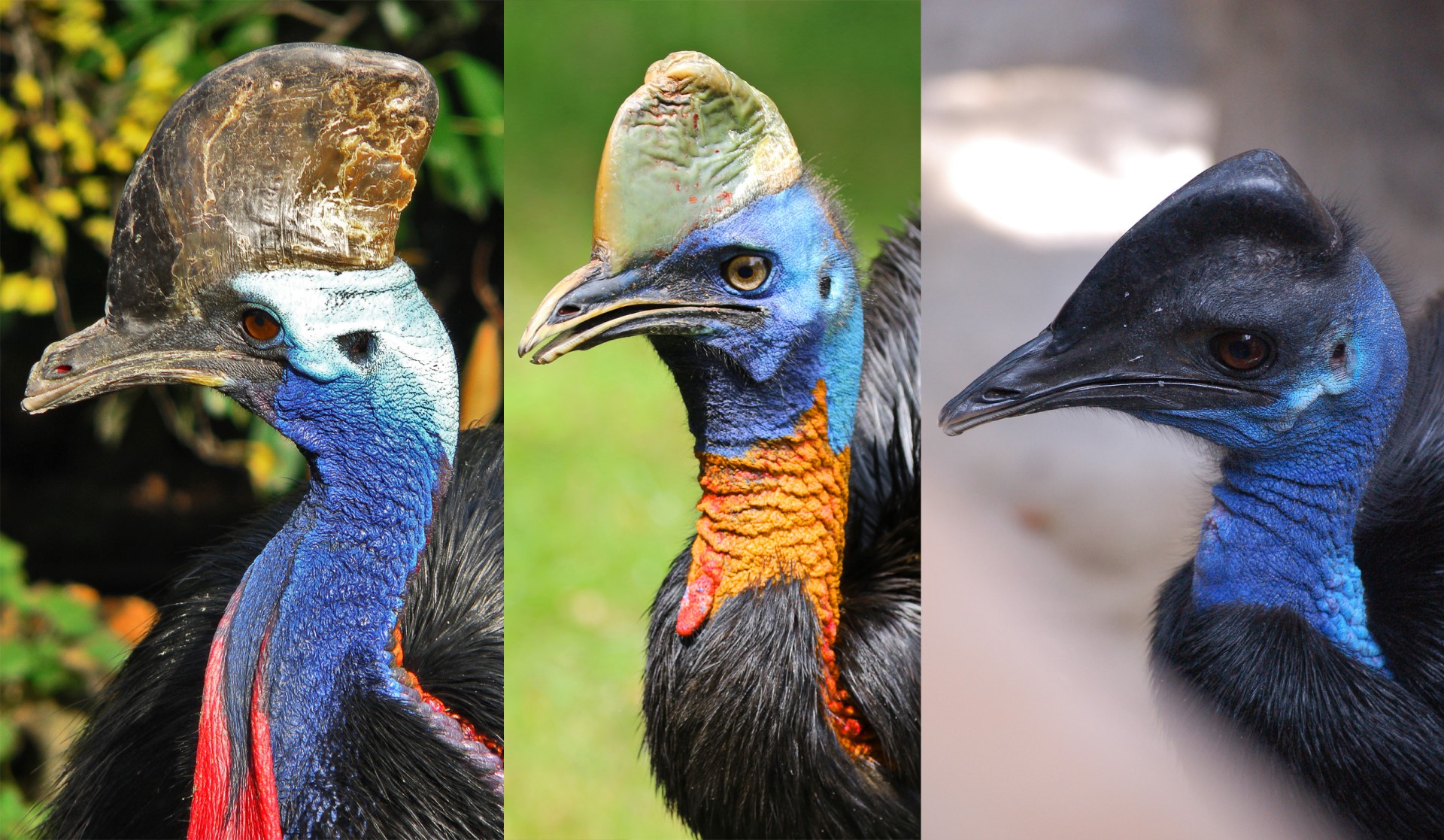
PaleoNeolitic (montage creator) BS Thurner Hof Kora27 Martin Sordilla – Wikimedia Commons
Cassowary
- There are 3 species of Cassowary, from left to right Southern, Northern and dwarf Cassowary. The Southern Cassowary is the 3rd largest and 2nd heaviest bird in the world, after ostrich and rhea.
90% of their diet consists of fruit. Having said this, they are classed as omnivores and take a range of foods including shoots and grass seeds, fungi invertebrates, eggs carrion fish and small vertebrates such as rodents, small birds, frogs, lizards and snakes. While all of the ratite family can eat meat, Cassowaries are by definition the most omnivorous, and while other ratites will eat meat when other food is scarce Cassowaries take more meat than others.
While the southern Cassowary has part of its range on Australia, all three have their main range on New Guinea
- The southern Cassowary is listed as least concern by the IUCN, however with a 4400 individuals other agencies class it as endangered.
- The northern Cassowary is also listed as least concern by IUCN and this population numbers 10,000-20,000
- The dwarf Cassowary is listed as least concern as well. Unfortunately I cannot find estimates for this species, but with an overall population of 20,000-50,000 it is likely to be the most common
Adults are formidable enough that there is no regular predation. However, a range of birds such as the Papuan eagle, mammals such as the New Guinea singing dogs, and reptiles such as pythons and monitor lizards all take young when adults are not protecting enough.
Below is any news we have written on this species, and below that will be listed places you can see this species in the wild. Should you work in conservation or tourism on this range of species do get in touch through the list your wild place link on the home page.